Study in Switzerland
Switzerland is a great place for overseas students to study because of its well-regarded educational system, gorgeous scenery, and rich cultural legacy. This in-depth guide will give you important information on studying in Switzerland if you’re an Indian student hoping to continue your education there.
We therefore present to you a handbook on studying in Switzerland nowadays. We have looked into the best Swiss universities, the price of education there, and student scholarship opportunities. For Indian students studying in Switzerland, we will present you the necessary information in this post to help you along the way.
Why Study in Switzerland?
With tons of international students, Switzerland attracts students with its affordable education and world-class education system. Here education is based on an active learning method that increases the standards and teaching methods of the institutes. Switzerland has a larger population of international students than its population. It’s the perfect way to open your connections and explore new networks.
Switzerland is a safe place to live
High-efficiency institutes
A quality higher education
Diversity at its peak
Network building scope
Quick Facts About Switzerland
- Switzerland is a popular tourist destination and one of the safest countries to live in.
- Tourism and hotel management degrees, finance, international business, law, and computer science are among the most sought-after programs in Switzerland.
- The number of international students who choose to study in Switzerland continues to grow year by year.
- Switzerland is an established country with cities like Basel, Zürich and Geneva attracting skilled international workers.
- Strong rates of vocational training and a high level of skill diversity.
Steps to Start Studying in Switzerland

Benefits of Studying in Switzerland
Many universities in Switzerland are open for International students and many internship opportunities are provided. Related to research and innovative studies Switzerland is very favorable for any applicant. Swiss Universities are affiliated in 3-4 languages and international networking opportunities are endless.
Study Options
| Part-time work duration allowed | Post-study work permit | Can departments work full-time? |
Bachelors | N/A | 6 months | No |
Masters | N/A | 6 months | No |
Requirements for Students Applying to Switzerland
To be eligible to study in Switzerland, you must meet the following criteria:
- Applicant must have a score of at least 65% from a well-recognized university or college to apply to any graduate courses in Switzerland.
- A minimum age of 18 years is also a necessity.
- English proficiency should be good with a score band of 6.0 in IELTS and a score of 90 or more in TOELF. IELTS and TOEFL are two major tests that check the English knowledge of a person and it checks the written and spoken English abilities of a candidate with reasoning abilities.
Eligibility to Study in Switzerland
Study Options | Minimum Educational Requirement | Minimum Required Percentage | IELTS/TOEFL Score | Standardized Tests |
Bachelors | 12 years of education (10+2) | 65% | Overall, 6.5 with 6 in each band | NA |
Masters (MS/MBA) | 3/4 years graduate degree | 65% | Overall, 6.5 with no band less than 6 | MBA program may require 1-2 years of work experience with GMAT |
Educational Requirements to Study in Switzerland
Study Options | Educational Requirement | Minimum Required Percentage | IELTS/TOEFL Score | Backlogs Information |
Bachelors | 12 Years of Education (10+2) | 65% | Overall, 6.5 with 5.5 in each band | Up to 10 backlogs (some private hospital universities may accept more) |
Masters (MS/MBA) | 3/4 year graduate degree.
| 65% | Overall, 6.5 with no band less than 6 |
Cost of Study in Switzerland for Indian Students
University Fees depend upon the study program you choose. The table below gives information about the course and average tuition fees.
Study program | Annual fees in Swiss France (CHF) |
Graduate Program | 400 – 7000 |
Post-graduate program | 200 – 6,000 |
Study Options
| Average Tuition Fee per Year | Visa Fee | Living Expenses for 1 Year |
Bachelors | 6000 CHF or more | 88 CHF | 7,000 to 15,000 CHF |
Masters |
Upcoming Intakes in Switzerland
Universities and colleges in Switzerland offer 2 intakes. We recommend applying well in advance, as admissions and scholarships become more competitive as the deadline approaches. It is advisable to submit your application 6 to 8 months before the commencement of the academic session for better chances of success.
Intake 1 | Intake 2 |
June/July | March/April |
Study Options | Duration | Intake Months | Deadline to Apply |
Bachelors | 3-4 Years | July and April | 6 – 8 months before the start of the academic session |
Masters | 1-2 Years | July and April |
Popular Universities in Switzerland

International University in Geneva, Geneva

Swiss Education Academy , Montreux

University of Zurich (European and Asian Business Management – EABM), Zürich, Switzerland
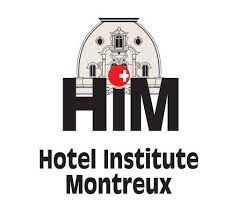
Hotel Institute Montreux (HIM), Montreux
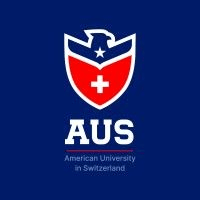
American Institute of Applied Sciences in Switzerland, La Tour-de-Peilz

Swiss School of Business and Management (SSBM), Geneva

International Hotel & Tourism Training Institute (IHTTI), Montreux

International Management Institute (IMI), Kastanienbaum, Luzern

Hotel & Tourism Management Institute Switzerland (HTMi), Lucerne
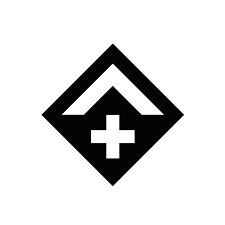
Les Roches, Montana
Top 5 Universities in Switzerland 2024
Global rank | Universities |
7 | ETH Zurich – Swiss Federal Institute Of Technology |
36 | Swiss Federal Institute Of Technology In Lausanne |
91 | University of Zurich |
126 | University of Bern |
124 | University of Basel |
Courses to Study in Switzerland

- Banking & Finance
- Master of Business Administration (MBA)
- Artificial Intelligence (AI)
- Engineering
- Law
Top 5 Universities in Switzerland 2024
Scholarship name | Amount per year in CHF |
ETH Zurich Excellence scholarship | Up to 12,000 |
University of Lausanne Masters’ grant for foreign students | Up to 19,000 |
Friedrich Naumann Foundation Scholarship | Up to 10,000 |
Graduate Institute Geneva Scholarship | Up to 20,000 |
Franklin Honors Program Awards | From 2,000 up to 9,000 |
Note* The Swiss Universities/Colleges scholarship amounts and programs are subject to change, so it’s important to check the individual websites for the most recent details. Indian students should also confirm the requirements for eligibility and the application process.
Types of Swiss Student Visa
C Visa
For a short period, this visa allows you to stay and study in Switzerland for courses that last up to only 3 months. It can be used for short language courses or lectures and seminars.
D Visa
International students are granted this visa for long-term academic or work purposes in Switzerland. If you are from a European nation you do not need to bring ay visa to live and study here, but for non-European individuals, a proper visa is required.
Types of Swiss Student Visa
- Passport: A passport states the nationality of the person traveling, it is the country’s official identity, and it is essential for international travel.
- Letter of Acceptance (LoA): A letter of acceptance is a document that is sent by the institute that has selected or offered you a position in their institute. This document is a necessity for entering the university and it explains all the details related to the courses and timing that the applicant has been signed to.
- Proof of funds: Applicants have to showcase a valid account with sufficient funds for the living expenditures that they are going to incur. If possible the source of the income can also be shared to prove a clear character and background.
- University fee receipt: Payment of the fee according to the courses enrolled should be done timely. It is to show that the student has no dues on his name in the university and no hindrances should be in the student’s timely application and approval.
- Written Statement: A written statement is also required stating that the individual will leave the country upon his/her completion of the university-assigned course. All documents must only be submitted in French, German, English, or Italian.
How to Apply for a Switzerland Student Visa?
Step 1. First, find out if you qualify for a student visa to Switzerland.
Step 2: Set up the document checklist.
Step 3: Obtain a visa online.
Step 4: Await the result.
Step 5: Take a flight to Switzerland to further your studies.
Visa Processing Time
Processing Time for Switzerland is usually around 1-4 months. All the processing periods are estimated only on the correctness of the documents that have been submitted, so it will be beneficial if you apply well before the time of your travel and submit all correct documents for the fast and hassle-free working of your visa process. Apply well around 3 to 4 months before your scheduled course starts.
Visa Cost for Switzerland from India
For stays of less than three months, Indian students do not need a study visa; but, in order to study in Switzerland, they must obtain one. The price of a student visa for Switzerland might change based on a number of variables, including your country, the length of your stay, and the kind of program you’re studying.
CFH 88 is the standard visa price for D-type visas, nevertheless. Expenses may vary according to the type of visa.
Switzerland is a wonderful country full of amazing sights and breathtaking scenery. However, the nation is well-known for its user-friendly foreign student programs, which offer an alluring chance for Indian students who wish to study in Switzerland.
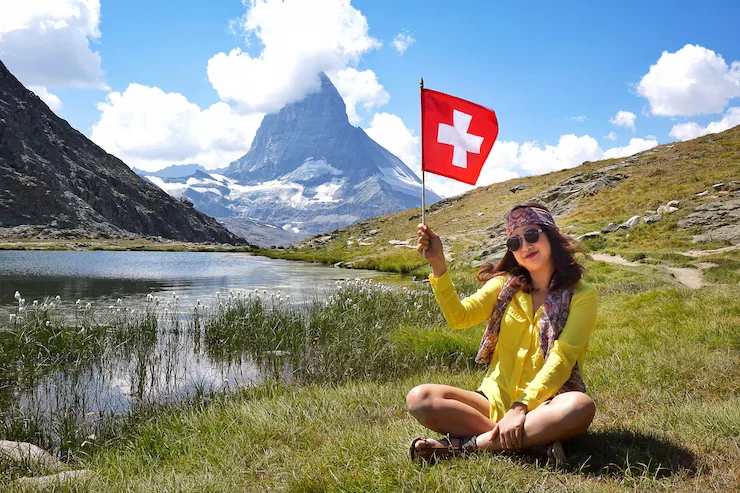

Swiss Universities Scholarships for Indian Students
Switzerland supports international students, especially those from India, in their academic endeavors through several scholarship schemes. These scholarships are given out on certain qualifying requirements, research potential, and academic merit. Popular scholarships available to Indian students studying in Switzerland are the Swiss Government Excellence Scholarships, as well as those provided by specific research institutes and universities.
Swiss Government Excellence Scholarships: Provided to international researchers and scholars to pursue postgraduate study or research in Switzerland.
- ETH Excellence Scholarships are merit-based awards given to ETH Zurich master’s students.
- Scholarships for overseas students pursuing a master’s degree at EPFL are known as EPFL Excellence Fellowships.
Scholarships particular to universities: To entice gifted international students, numerous Swiss universities offer grants and scholarships. For additional information, make sure to visit the websites of the relevant universities.
Why Choose EduLaunchers for Studying in Switzerland?
Get in touch with EduLaunchers study visa experts if you want to pursue higher education in Switzerland but are unsure of how to go about it or find it complicated.
Our goal at Edulaunchers is to give every one of our clients the finest service possible. Our staff of skilled and knowledgeable visa specialists is knowledgeable about the requirements for various visas in various nations. We will see to it that the candidates fulfill all the requirements, and our professionals are available to offer any advice the candidate needs.
Recently Graduated Students
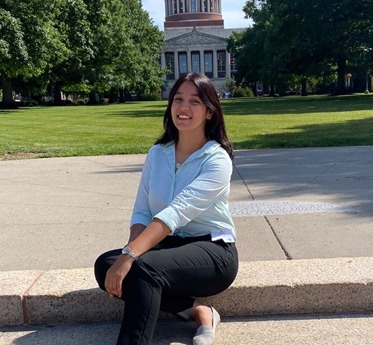


Our Latest Blog
Recently Asked Question
There are many good reasons why you should consider studying abroad in Switzerland. The education system in Switzerland is renowned for its high standards and active learning-based teaching strategies. It is an excellent education system and a reasonably priced one. Additionally, Switzerland is a popular destination for international students because of its excellent standard of living, high wages, and low unemployment rates.
Switzerland is also renowned for its stunning natural surroundings, rich cultural past, and academic research support.
After receiving their degree, students can stay in Switzerland for a further six months to hunt for work. However, recently graduated students require a work permit once they graduate.
Depending on the institution, the course, and the degree of study, studying in Switzerland has a range of costs. A student in Switzerland will typically pay between 1,500 and 3,000 Swiss francs per month for housing, tuition, and other living expenses. The annual tuition fee for international students in Switzerland ranges between £650 and £2,000 per year, depending on the chosen subject and institution. For medicine students, it can go up to £1600 a year.
Around CHF 18,500 is the typical total cost in Switzerland for a bachelor’s degree programme. The estimated total cost for one academic year, including living expenses, ranges between CHF 20000 and CHF 30000, depending on the university location, area of study, and personal needs.
Depending on the institution, the course, and the degree of study, studying in Switzerland has a range of costs. A student in Switzerland will typically pay between 1,500 and 3,000 Swiss francs per month for housing, tuition, and other living expenses. Around CHF 18,500 is the typical total price in Switzerland for a bachelor’s degree program.
The price of a Master’s degree in Switzerland varies based on the school and the course of study. The tuition for the entire programme costs between CHF 3,000 and CHF 13,000 in total. Some universities offer more expensive degrees that range in price from 30,000 to 85,000 CHF. For Bachelor’s and Master’s programmes, the typical annual tuition at Swiss public institutions ranges from 400 to 3,700 EUR. Public universities charge between 700 and 3,500 CHF on average per semester for bachelor’s degree programmes and between 700 and 2,000 CHF for master’s degree programmes.
To Get Permanent residency in Switzerland, you must have lived for 10 years in Switzerland. To apply for PR, you must visit your Cantonal Migration Office and provide the following details:
- Proof of study completion
- Proof of financial stability (This also includes proof of accommodation)
Of course, you can settle in Switzerland after completing your studies. You need to apply for a residence permit, with the help of which you can get an additional 6 months to hunt for a job in the country.





